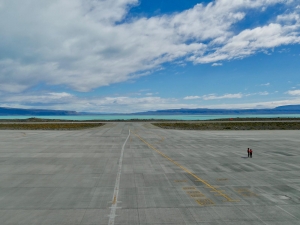
The staggering impact of COVID on worldwide travel, tourism and trade shows no sign of diminishing any time soon. This blog highlights the impact on airlines and tourists, along with the woeful failure in the UK to deliver appropriate testing for travellers.
Fearful Travellers
Fearful non travellers, is probably a more appropriate description! The perfect storm has many components including:
- No consistent actions by nation states, revoking and allowing travel using a variety of risk assessments
- Continual flight rescheduling and cancellations
- Uncertainty about the COVID regime and its effectiveness at your destination
- Concerns about the risks at key touchpoints on the journey – check in distancing, hotel precautions and doubts about public transport
- Security of my booking – not helped by very slow refunds by airlines and travel companies in the early months of the pandemic
- Will my insurance protect me?
- What will happen if we are stranded?
- The irrepressible optimism of many politicians, which raises false hopes and unreasonable expectations – with the upcoming Christmas/New Year period a case in point
Cathay Cuts
Cathy Pacific has responded to the continuing downturn with a major restructuring.
“The restructuring will enable the Company to secure its future, so it can protect as many jobs as possible, whilst meeting its responsibilities to the Hong Kong aviation hub and its customers” says the Group. It aims “to create a more focused, efficient and competitive business. It will do this by harnessing Cathay Pacific’s strengths and unparalleled customer experience, while leveraging the potential of its low-cost carrier, HK Express”. As a consequence, “Cathay Dragon, the Group’s wholly owned regional subsidiary, will cease operations with immediate effect. It is intended that regulatory approval will be sought for a majority of Cathay Dragon’s routes to be operated by Cathay Pacific and HK Express, a wholly owned subsidiary”.
CEO Augustus Tang commented “We have taken every possible action to avoid job losses up to this point. We have scaled back capacity to match demand, deferred new aircraft deliveries, suspended non-essential spend, implemented a recruitment freeze, executive pay cuts and two rounds of Special Leave Schemes…The global pandemic continues to have a devastating impact on aviation and the hard truth is we must fundamentally restructure the Group to survive.’
The Group emphasised that it ‘will be offering severance packages that go well beyond statutory requirements. It will also be extending medical benefits and staff travel entitlements, as well as providing counselling and job transition support services. There will be no offset against pension contributions”.
Clouds Gather -IAG Reduces

International Airline Group – BA, Iberia, Vueling and Aer Lingus – has made an unscheduled trading update which mirrors the circumstances of Cathay and many more airlines worldwide. “Recent overall bookings have not developed as previously expected due to additional measures implemented by many European governments in response to a second wave of COVID-19 infections, including an increase in local lockdowns and extension of quarantine requirements to travellers from an increasing number of countries. At the same time, initiatives designed to replace quarantine periods and increase customer confidence to book and travel, such as pre-departure testing and air corridor arrangements, have not been adopted by governments as quickly as anticipated.
In response to the high uncertainty of the current environment, IAG now plans for capacity in Q4 2020 to be no more than 30 per cent compared to 2019. In the third quarter the average seat occupancy dropped from 87.7% in Q2 to 48.9% in Q3.
Departure and Arrival Testing
London Heathrow now has departure testing facilities in Terminals 2 and 5. Initially only passengers flying to Hong Kong will be able to be tested prior to departure. The test costs £80 and delivers results in around 60 minutes.
The Airport notes that “developments in international testing are fast-moving and the Heathrow-based rapid testing sites have the potential to facilitate a wide range of testing methods either pre-departure or on arrival. Pre-departure is one of a number of testing regimes being implemented around the world, and a crucial next step toward keeping the travel industry moving, while limiting the spread of the virus.
Heathrow www.heathrow.com also reminds us of the existing ‘Test-on-Arrival’ facility at the airport “that, while made available for use in August, is still yet to gain UK Government approval for use. Now that Heathrow has facilities that allow for passengers to be tested either on arrival or prior to departure, the aviation industry is urging the Government’s new Global Travel Taskforce to launch a testing regime that provides a safe alternative to the existing 14-day quarantine”.
Heathrow CEO, John Holland-Kaye, commented: “Many other countries are already using testing to keep their borders safe while restarting trade and travel. These facilities will make it easier for passengers going to those countries to get a test and have the potential to provide a service for arriving passengers. Ultimately, we need a Common International Standard for pre-departure testing, and we welcome the UK government’s recent announcement that it wants to take a global lead in establishing this. We will work with them to make this happen as soon as possible, so that we protect livelihoods as well as lives.”
Making the case for testing

A recent Report commissioned by Virgin Atlantic, IAG, TUI, Heathrow, MAG, Collinson, Airlines UK and IATA was released in October 2020. The “Review of Evidence on Testing on Arrival Schemes” was delivered by Oxera www.oxera.com and Edge Health www.edgehealth.co.uk. The authors challenge the Public Health England analysis that testing on arrival would identify only 7% of virus cases. They emphasise the importance of understanding the effectiveness of airport testing schemes in the context of an understanding of the level of acceptable risk for travellers and how this would change with testing. They also challenge the assumption “that the risk of travellers spreading the virus is reduced to close to zero with a mandatory 14- day quarantine requirement. However, this is unlikely to be the case given that returning travellers are currently permitted to quarantine with other individuals (who do not have to quarantine) and there is evidence to show that compliance with quarantine may be as low as 20%”.
The authors will now look at airport testing regimes globally, so hopefully their research will have a positive impact on the UK Government’s Global Travel Taskforce. If we’re lucky reality may, at some point, impact upon the inert Government Ministers ‘leading” it!
Stuart McAdam
TheMcAdamee ~ Impact of COVID on worldwide travel ~